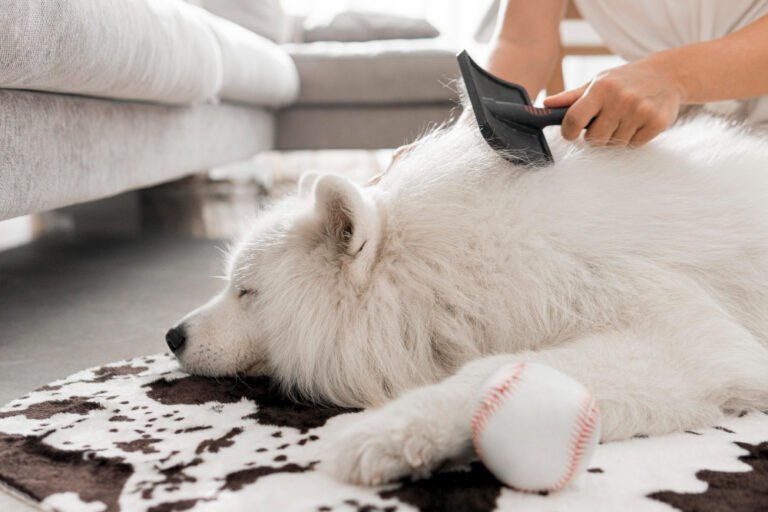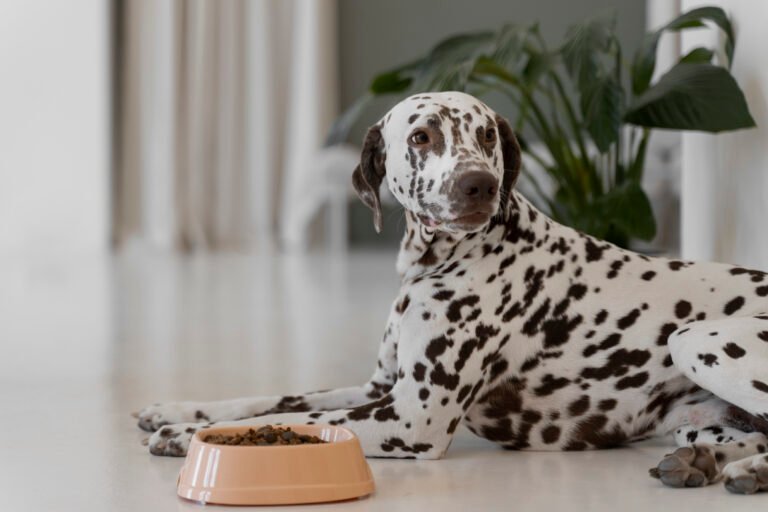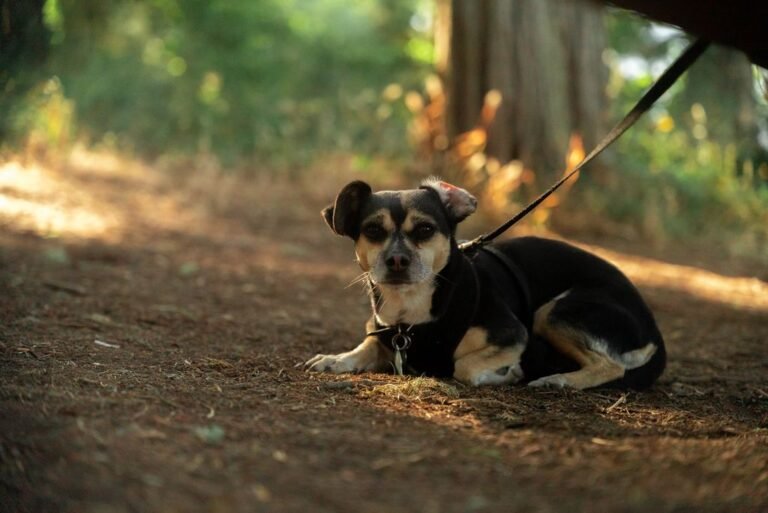Traveling with Pets: Seasonal Considerations and Tips
Traveling with pets can be a fun and rewarding experience, but it requires careful planning and consideration. In this article, we will explore seasonal considerations and provide helpful tips for traveling with pets. From choosing the right season to preparing your pet for travel, we will cover all aspects of safe and enjoyable pet travel. So, let’s dive in and make your next adventure with your furry friend a memorable one!
Key Takeaways
- Understand the impact of seasonal changes on your pet’s health and comfort.
- Consult with your veterinarian before traveling to ensure your pet’s health and well-being.
- Pack essential items for your pet, including identification and vaccination records.
- Choose the right mode of transportation that suits your pet’s needs.
- Research pet-friendly destinations and accommodations before your trip.
Choosing the Right Season for Traveling with Pets

Understanding the Impact of Seasonal Changes on Pets
During the holiday season, excessive crowds and extra-loud noises can make your pet uncomfortable. They may experience anxiety and react differently, such as hiding from certain activities or expressing new behaviors. Sticking to a routine is key to helping them cope with these changes. Make sure to feed them and play with them at their usual times. While it is possible to have pets around for holidays just fine, it’s important for owners to be mindful and knowledgeable about ways to decrease their pets’ stress if needed. Always provide a place for peace where they can retreat to.
Considering Your Pet’s Health and Comfort
When traveling with your pet, it’s important to prioritize their health and comfort. Make sure that your pet has their own space to sleep and eat. If your pet has any specific dietary needs, check with the pet sitter or kennel to see if you need to provide their food. Additionally, if your pet is on medication or has a chronic illness, inquire if the pet sitter or kennel can administer medications and monitor their condition. It’s also important to consider where your pet will be most comfortable based on their health and anxiety level. If your pet has specific needs, such as a favorite toy or a familiar blanket, bring those along to offer comfort and a sense of security. Remember, the well-being of your pet should be a top priority during your travels.
Planning Ahead for Seasonal Travel Challenges
When traveling with your pets, it’s important to plan ahead and anticipate any challenges that may arise during different seasons. Weather conditions can have a significant impact on your pet’s well-being, so it’s crucial to consider their comfort and safety. For example, extreme heat or cold can be dangerous for pets, so it’s important to take necessary precautions. Additionally, certain seasons may bring about specific health concerns for your pet, such as allergies or seasonal illnesses. By being prepared and taking the necessary steps to ensure your family’s well-being, you can make your travel experience with your pets enjoyable and stress-free.
Preparing Your Pet for Travel

Consulting with Your Veterinarian
When preparing for travel with your pet, it’s important to consult with your veterinarian. They can provide valuable advice and guidance specific to your pet’s needs. Your veterinarian can assess your pet’s health and make recommendations to ensure their safety and comfort during the journey. They can also discuss any necessary vaccinations or medications that may be required. Additionally, your veterinarian can offer tips on managing your pet’s anxiety and stress while traveling. Pet safety tips are crucial, and your veterinarian can provide important information on how to keep your pet safe and secure during the trip. Remember, partnering with your veterinarian is essential for a successful and stress-free travel experience with your pet.
Ensuring Your Pet’s Identification and Vaccination
Ensure your pets have proper identification, including a collar with an updated ID tag and a microchip with your current contact information. It’s important to prioritize up-to-date vaccinations and assemble a comprehensive health record for your pet. This will facilitate smooth travel and ensure their well-being. Additionally, invest in appropriate carriers, crates, seat belts, or harnesses designed for pet safety during car or air travel. Test them with your pet several times before leaving for your destination to check they’re comfortable and secure, and to help them get accustomed to the new item. Taking these steps will ensure your pet’s safety and comfort throughout the journey.
Packing Essential Items for Your Pet
When preparing your pet for travel, it’s important to pack essential items that will keep them comfortable and happy throughout the journey. Here are some must-haves for your pet’s holiday travel kit:
-
Regular food: Sticking to your pet’s regular diet can help prevent digestive problems. Yummers Food is perfect for travel with no prep required, the resealing bags can be easily stashed in suitcases and carry ons!
-
Water bowls: Hydration is key, especially during long trips.
-
Required medications and supplements: If your pet is on any medication, be sure to pack enough for the duration of your trip. Bringing Yummers supplements on your trip ensures your pet will get the health support they need and the flavor they want.
-
Familiar toys and bedding: These can provide comfort during holiday travel and help your pet adjust to new environments.
-
Waste bags: For clean and easy waste disposal.
-
Pet first-aid kit: For handling minor emergencies on the road.
Remember, packing these essential items will make your pet’s trip more comfortable and worry-free pet feeding.
Transportation Options for Traveling with Pets

Choosing the Right Mode of Transportation
When it comes to traveling with your pet, choosing the right mode of transportation is crucial for their comfort and safety. Whether you’re taking a plane, train, or hitting the road, there are important considerations to keep in mind.
For air travel, it’s essential to research and choose airlines with pet-friendly policies and appropriate accommodations for your furry friend. Check the airline regulations, such as carrier or crate dimensions and documentation requirements, set by the airline you’re traveling on. Additionally, review airport policies and terminal maps to familiarize yourself with the procedures.
If you’re traveling by train, Amtrak’s pet policy allows for small pets on many routes. Keep your pet in a carrier and bring along their favorite toy for comfort.
For road trips, safety is paramount. The Humane Society suggests using a well-ventilated crate or harness to keep your pet secure. Remember to plan for regular stops to allow your pet to stretch, relieve themselves, and stay hydrated.
No matter which mode of transportation you choose, always prioritize your pet’s comfort and wellbeing. Bring their favorite toy, blankets, and water to keep them comfortable and hydrated throughout the journey. Plan frequent breaks for bathroom breaks, exercise, and hydration along the way. By taking these steps, you can ensure a smooth and enjoyable travel experience for both you and your furry companion.
Understanding Airline and Train Travel Policies
When traveling with your pet by air or train, it’s important to familiarize yourself with the airline and train travel policies to ensure a smooth and stress-free journey. Each airline and train company may have specific requirements and regulations that you need to follow. Here are some key points to consider:
- Carrier or crate dimensions: Check the airline regulations for the dimensions of the carrier or crate that your pet will be traveling in. Make sure it meets the requirements to ensure your pet’s safety and comfort.
- Documentation requirements: Be aware of any documentation that may be required by the airline or train company, such as health certificates or vaccination records.
- Pet-relief areas: If you have layovers during your journey, it’s helpful to know where the designated pet-relief areas are located in the airports or train stations. This will allow you to plan your layovers accordingly and provide your pet with necessary breaks.
Remember, each airline and train company may have different policies, so it’s important to research and choose the right one for your pet. By following these guidelines, you can ensure a positive travel experience for both you and your furry friend.
Exploring Pet-Friendly Accommodations
Whether you’re staying with family, at an Airbnb, or a hotel, consider the following: Pet-Friendly Accommodations: Choose pet-friendly accommodations that welcome your furry companions. Check in advance for pet policies, fees, and any restrictions. Designate a Safe Space: Bring your pet’s crate, bed, and favorite toys to give them a quiet space to retreat to if they need a break from the celebration. Pet-Proofing: Take precautions to pet-proof your temporary home by removing potential hazards and bringing familiar items from your own home. Local Veterinarians: Research nearby veterinary hospitals in case of emergencies.
Safety Measures for Traveling with Pets

Securing Your Pet in a Vehicle
When traveling with your pet in a vehicle, it is crucial to prioritize their safety and comfort. Restraint is key to prevent them from roaming freely in the car, which can be distracting and dangerous. Always use a pet carrier or harness to secure them in place. Additionally, it is important to bring their favorite toy, blankets, and water to keep them comfortable and hydrated throughout the journey. Remember to plan for frequent breaks to allow your pet to stretch their legs and take bathroom breaks. By taking these precautions, you can ensure a safe and enjoyable travel experience for both you and your furry friend.
Protecting Your Pet from Extreme Weather
When traveling with your pet, it’s important to protect them from extreme weather conditions. Just like we bundle up during cold winter months, our pets need an extra layer of protection, too. Insulated coats, snowsuits for extreme temperatures, and hats can help keep them warm and comfortable. If you’re in a snowier part of the country, be mindful of the salt that melts ice and snow, as it can be hurtful to your dog’s paws. Consider using weatherproof boots or paw wax to protect their paws. Indoors, provide your furry friends with a heated bed or cozy blanket to keep them comfortable. Avoid using heating pads designed for people, as they can cause burns. It’s also important to be prepared for any emergencies that may arise. Stock up on medications before your trip and know your options for veterinary care in case of an emergency. Chewy offers a free Connect with a Vet service that allows you to chat or video call with veterinary professionals. Remember, your pet’s safety and well-being should always be a top priority.
Preventing Lost Pets during Travel
When traveling with your pet, it’s essential to take precautions to prevent them from getting lost. Here are some tips to ensure your pet’s safety:
-
Proper Identification: Make sure your pet has a collar with an updated ID tag and a microchip with your current contact information. This will greatly increase the chances of being reunited with your pet if they wander off.
-
Secure Carriers and Restraints: Invest in appropriate carriers, crates, seat belts, or harnesses designed for pet safety during car or air travel. Test them with your pet before the trip to ensure they are comfortable and secure.
-
Supervision and Leashing: Always keep a close eye on your pet and keep them leashed when outside. This will prevent them from running off or getting lost in unfamiliar surroundings.
-
Research Pet-Friendly Accommodations: Before your trip, make sure to find pet-friendly accommodations that have secure fencing or designated pet areas. This will provide an extra layer of safety for your pet.
Remember, taking these precautions will help ensure a safe and enjoyable trip for both you and your furry friend.
Maintaining Your Pet’s Routine while Traveling

Creating a Comfortable Travel Environment
When traveling with your pet, it’s important to create a comfortable environment that will help them feel at ease throughout the journey. Comfort is key, so be sure to bring their favorite toy, blankets, and water to keep them comfortable and hydrated. Additionally, plan for frequent breaks to allow your pet to stretch, use the bathroom, and stay hydrated. This will help prevent any discomfort or restlessness during the trip.
If you’re traveling by air, it’s essential to choose the right airline that has pet-friendly policies and appropriate accommodations for your furry friend. Research the airline’s regulations regarding carrier or crate dimensions and documentation requirements. It’s also a good idea to review the airport policies and terminal maps to familiarize yourself with the procedures.
For road trips, safety is paramount. Consider using a well-ventilated crate or harness to secure your pet. Plan for regular stops to allow your pet to stretch, relieve themselves, and get some exercise. This will not only ensure their comfort but also reduce the risk of any accidents or discomfort.
When it comes to accommodations, make sure to find a pet-friendly destination that offers the necessary amenities for your pet. Research pet-friendly activities and attractions at your destination to make the trip enjoyable for both you and your furry companion. TripAdvisor is a great resource for finding information on dog parks, pet-friendly restaurants, and more.
Remember, the key to creating a comfortable travel environment for your pet is to prioritize their comfort, safety, and well-being. By planning ahead and taking the necessary precautions, you can ensure a smooth and enjoyable journey for both you and your furry friend.
Feeding and Exercising Your Pet on the Road
Feeding and Hydration: Stick to your pet’s regular feeding schedule, and ensure they have access to fresh water during travel. Avoid feeding right before departure to prevent motion sickness.
Regular Breaks: Plan for frequent breaks during road trips, allowing your pet to stretch, relieve themselves, and get exercise. Equip yourself with waste disposal bags for responsible pet-friendly stops.
Managing Your Pet’s Anxiety and Stress
Dr. Harrison says they can get anxiety during these times, too. Some animals might react differently around crowds and change, like hiding from certain activities or expressing new behaviors. Therefore, she says sticking to a routine is key, like making sure you feed them and play with them at their usual times. Although Dr. Harrison says that it is possible to have pets around for holidays just fine, she highlights the importance of owners being mindful and knowledgeable of ways to decrease their pets’ stress if needed. Always provide a place for peace. Give them some place where they can feel safe and secure, away from the festive foods.
Exploring Pet-Friendly Destinations

Researching Pet-Friendly Attractions and Parks
Explore and sniff out pet-friendly activities at your destination. TripAdvisor offers a wealth of information on dog parks, pet-friendly beaches, and hiking trails. Make sure to plan ahead for a seamless journey by researching and booking pet-friendly accommodations. Stick to your pet’s regular diet to avoid digestive issues. Avoid feeding pets table scraps, especially foods that can be toxic to them. Help your pet settle in by creating a familiar space in your accommodation. Bringing their own bedding and toys can provide comfort in a new environment. Consider packing familiar items like toys and bedding to make your pet feel at home.
Finding Pet-Friendly Restaurants and Cafes
When traveling with your pet, finding pet-friendly restaurants and cafes can be a great way to enjoy a meal together. Many establishments now welcome furry guests, allowing you to dine without having to leave your pet behind. Traveling for holidays? Make sure to plan ahead and research pet-friendly dining options at your destination. Here are some tips to keep in mind:
- Stick to your pet’s regular diet to avoid digestive issues. Table scraps can be tempting, but it’s best to avoid feeding them to your pet, as some foods can be toxic.
- Create a familiar space for your pet in the restaurant or cafe by bringing their own bedding and toys. This can help them feel more comfortable in a new environment.
- Be mindful of other diners and follow any rules or guidelines set by the establishment. Keep your pet well-behaved and under control.
Remember, enjoying a meal together with your pet can be a special experience, but it’s important to be considerate of others and ensure your pet’s comfort and safety.
Discovering Pet-Friendly Accommodations
When traveling with your pet, it’s important to choose pet-friendly accommodations that welcome your furry companions. Before booking your stay, make sure to check in advance for pet policies, fees, and any restrictions that may apply. Bringing your pet’s crate, bed, and favorite toys can provide them with a familiar and comfortable space to retreat to if they need a break from the excitement. Additionally, take the time to pet-proof your temporary home by removing any potential hazards and bringing familiar items from your own home. Researching nearby veterinarians can also give you peace of mind in case of any emergencies.
Emergency Preparedness for Traveling with Pets
Carrying a Pet First Aid Kit
When traveling with your pet, it’s essential to be prepared for any minor emergencies that may arise. One important item to have on hand is a pet first-aid kit. This kit should include basic supplies such as bandages, antiseptic wipes, tweezers, and scissors. It’s also a good idea to include any medications that your pet may need while on the road. Additionally, consider packing a pet thermometer to monitor your pet’s temperature in case of illness or injury. Remember to regularly check and replenish your first-aid kit to ensure that all supplies are up to date and in good condition.
Knowing the Location of Veterinary Hospitals
When traveling with pets, it’s important to be prepared for any emergencies or unexpected health issues. Research nearby veterinary hospitals or clinics in the area you’ll be visiting, so you know where to go if your pet needs medical attention. It’s also a good idea to have the contact information of a local emergency vet clinic on hand. Additionally, make sure your pet has proper identification, including a collar with an updated ID tag and a microchip with your current contact information. By taking these precautions, you can ensure your pet’s safety and well-being while traveling.
Having Emergency Contact Information
Emergencies can happen at any time, and it’s important to be prepared. Make sure to have the contact details of a local emergency vet clinic on hand in case of unexpected situations. Additionally, consider using a veterinary telehealth platform for immediate guidance if you’re unsure about the severity of a situation. Being proactive and having these resources readily available can provide peace of mind during your travels.
Emergency Preparedness for Traveling with Pets
Conclusion
Traveling with pets during the holidays can be a delightful and enriching experience for both you and your furry companions. By planning ahead, staying informed, and packing thoughtfully, you can ensure a comfortable and memorable journey. Remember, the key to a successful trip lies in understanding your pet’s needs and ensuring their comfort and safety at every step of the journey. As you embark on your holiday adventures, share your experiences and tips with fellow pet travelers. Your stories can inspire and guide others in making their holiday travels with pets just as enjoyable. Happy travels and happy holidays to you and your pets!
Frequently Asked Questions
Is it safe to travel with pets during the holiday season?
Yes, it can be safe to travel with pets during the holiday season. However, it requires careful planning and consideration to ensure their safety and well-being.
What should I pack for my pet when traveling?
When traveling with your pet, you should pack essential items such as food, water, bowls, leash, collar, identification tags, medications, and comfort items like blankets or toys.
Can I fly with my pet?
Yes, you can fly with your pet. However, it is important to research and choose airlines with pet-friendly policies and appropriate accommodations for your furry friend.
How can I keep my pet calm during travel?
To keep your pet calm during travel, you can try using natural calming remedies, such as soothing music or pheromone sprays. It is also important to create a comfortable and familiar environment for your pet.
Are there pet-friendly accommodations available?
Yes, there are pet-friendly accommodations available. Many hotels, vacation rentals, and campgrounds welcome pets. It is recommended to research and book accommodations that specifically cater to pets.
What should I do in case of an emergency while traveling with my pet?
In case of an emergency while traveling with your pet, it is important to carry a pet first aid kit and know the location of veterinary hospitals in the areas you will be visiting. It is also recommended to have emergency contact information for your veterinarian or a local veterinary clinic.







